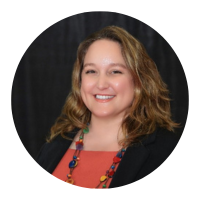In late 2020, something big happened in interventional cardiology: the FDA approved intravascular lithotripsy (IVL) to treat coronary lesions1. IVL balloon technology has been used to dilate lesions, including calcified lesions, in the peripheral vasculature in the leg and renal arteries since 20192. Each year, about 600,000 Americans need coronary interventions3. With the combination of this new technology and significant demand, operators quickly needed the education to safely adopt this new device into practice.
As a society education team, SCAI needed to overcome several barriers to help physicians safely use this new therapy: Physicians needed to review the evidence, see their peers use the device, learn to select appropriate patients for safety and efficacy, and finally become trained to use in their cardiac catheterization lab (CCL). SCAI submitted an education grant to the device manufacturer and was awarded a grant for several activities.
We rolled out the first activity within weeks. It was a recorded interview between a key cardiovascular journal editor-in-chief and the primary investigator for the latest coronary IVL trial. This 15-minute online microlearning module allowed us to quickly publish the key facts to our audience.
The second activity was a webinar that included a live case recording. As procedural operators, it is critical that learners understand how devices work in an actual patient, and there is no substitute for observing experienced operators. We recorded the procedure with a case moderator in CCL and a live panel of clinical investigators and experts participating remotely. Along with the video of the operator, patient, and panelists, the learners could see intravascular images and fluoroscopic angiographs in real time. We broadcast the live case during the webinar. The learning event also included lectures from clinical investigators about the new technology. We reached 181 live and 202 enduring learners with this second activity.
As our final education activity, SCAI produced a one-hour satellite symposium with expert lectures on coronary IVL at our 2021 Scientific Sessions. Interest remained high, with 179 people attending and 35 enduring learners.
Independent of this education series, SCAI published a “Position Statement on Best Practices for Clinical Proctoring of New Technologies and Techniques.”4 While the statement’s main thrust is outlining the medico-legal liabilities of the proctor/operator relationships, it provides a necessary steppingstone to the path of adopting new medical devices into practice.
As a medical specialty society, our strength is having experts on our team — from webinar production logistics, to education, to document experts, to KOL members — who can provide vital information to launch a new therapy into practice. We reached 675 learners, representing a little over 10% of interventional cardiologists in the United States5. We started with lectures on data and patient selection, moved to observing the procedure, and finished with advising about proctoring so physicians can safely treat patients and enhance lives.
References:
1 P200039 - Shockwave Intravascular Lithotripsy (IVL) System with Shockwave C2 Coronary - Approval Letter (fda.gov)
2 K191840.pdf (fda.gov)
3 Masoudi, Frederick A et al. “Trends in U.S. Cardiovascular Care: 2016 Report From 4 ACC National Cardiovascular Data Registries.” Journal of the American College of Cardiology vol. 69,11 (2017): 1427-1450. doi:10.1016/j.jacc.2016.12.005
4 Seto, Arnold, et al. "SCAI Position Statement on Best Practices for Clinical Proctoring of New Technologies and Techniques." Journal of the Society for Cardiovascular Angiography and Interventions, vol. 1, no. 3, 2022, https://doi.org/10.1016/j.jscai.2022.100036.
5 Bass, Theodore A. “Interventional Cardiology US Workforce: current challenges.” Circulation. Cardiovascular interventions vol. 7,6 (2014): 733-5. doi:10.1161/CIRCINTERVENTIONS.114.002136
 Laura Porter, CMP, has been involved in continuing accredited education for over 15 years with experience creating conferences and learning events, online and in person. Her work focuses on strategic initiatives, program leadership, accreditation and educational content. Along with her team, she has been integral to growing SCAI's education portfolio from eight activities to 130, from 2,000 to 30,000 learners, bringing evidence-based and vital content to clinicians. Outside of work, Laura’s a musician, a voracious reader and enjoys the great outdoors with her family.
Laura Porter, CMP, has been involved in continuing accredited education for over 15 years with experience creating conferences and learning events, online and in person. Her work focuses on strategic initiatives, program leadership, accreditation and educational content. Along with her team, she has been integral to growing SCAI's education portfolio from eight activities to 130, from 2,000 to 30,000 learners, bringing evidence-based and vital content to clinicians. Outside of work, Laura’s a musician, a voracious reader and enjoys the great outdoors with her family.